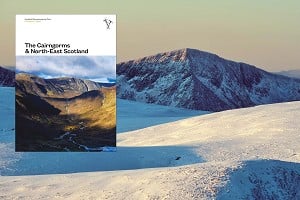

There's a persistent myth about the Mt. Blanc range, stating it's an area that lacks in the beginners' routes department and, as with many myths, there's an element of truth here. In the Rosa, Ecrins or Mischabel ranges, the majority of altitude routes are in the lower grades. In the Mt. Blanc area, the scale is firmly tilted towards the harder stuff with as much as 70% of the available lines being graded above UIAA D, and there's very little chance for non-technical terrain outside obviously dangerous or remote spots. Mt. Blanc is a predominantly granite area (with some important gneiss presence), with steep walls, tower-like spires, and deep glacial valleys, thus presenting great, often enormous height differences in a relatively compact space. A newcomer could be overwhelmed and intimidated just looking up.
And, it's not just a matter of difficulty. Despite being located in a densely populated corner of Europe, and being crossed by important communication routes (and the world's busiest “telepherique”), the Mt. Blanc range can be extremely serious. Its position at the north-west tip of the alpine arc makes it prone to sudden, often dramatic, weather changes. The tormented glacial profile may transform hut access and route approaches in climbs into the climbs. And then there's altitude to deal with, as most of the range terrain is well above 3000m. The non-stop daily flights of the PGHM rescue helicopter (Chamonix has the World's busiest mountain rescue) pay witness to the dangers and the unforgiving character of the Mt. Blanc range.
Despite this, it's undeniable that the French side of the range is the most popular climbing spot of the Alps, and Chamonix the self-proclaimed European capital of mountaineering. Every year, many thousands of beginners at the alpine climbing game come here, often clueless, and the first question they may ask themselves, is “What can I climb first?” The obvious answer is often to attempt the Big One itself (sometimes with dire consequences), or to crowd the few well known, ultra-frequented classics like the Cosmiques Ridge or the Petit Aiguille Verte. “The Mont Blanc Range” - a translation of what was originally an entry in the “Montagne Evasion” French series, published by Glenat - attempts to move away some of this excessive traffic towards a wider choice of targets.
This volume introduces 21 classic routes, from F to AD+ difficulty, 20 on the French/Chamonix side, and one on the opposite Italian/Courmayeur area. Routes are ordered in a north-east to south-west fashion, the northernmost being the Aiguille de la Tour (from the Couloir de La Table) and the southernmost, Mt. Tondu, first alpine summit of many young mountaineers. In between, there's a selection of more or less well known routes. Of course this includes the above-mentioned hyper-classics; first of all the inevitable Cosmiques Ridge, but also the Petit Aiguille Verte (with the harder Chevalier Line) are included too. Others of moderate complexit, like the Forbes Ridge at the Chardonnet, or the Rochefort Ridge, and there are more technically exciting but less committing popular favourites (like the Cherè Couloir on the Tacul, maybe the most frequented ice route of the Alps).
Few items in this list are unknown (perhaps the Aiguille de L'Eboulement or the Trelatéte Traverse from the north side), but there are no truly oddball choices. Curiously, the Swiss and the Italian sides are completely ignored. It's true that the “other” part of Mt. Blanc has an air of ferocity almost unparalleled anywhere else in the Alps, however, there are several worthy entry-level choices even on the Courmayeur side (like Petit Mt. Blanc or Mt. Dolent, or Pt. Innominata), but this book decides to overlook them, as it does the smaller Swiss corner of the range; another pity, considering how little traffic that region sees. Additionally, in the case of the Trelatete Traverse the choice to recommend the Trelatete North – Lex Blanche – Dome de Neige link from the Contamine Valley, instead of the slightly easier and far more panoramic Trelatete East via Petit Mont Blanc from Val Veny, is definitely bizarre.
Routes themselves are presented in an excellent and extremely clear fashion. For each one you get a general description, a well-drawn sketch of the ascent and descent line, difficulty grade (more of this later), suggested gear, a choice of pictures (some very good), a lengthy introductory comment, and some brief historical notes. There's also the welcome addition of climbing times - reveresing the current trend not to include them (they're necessary guidelines if you're making your alpine apprenticeship). With few exceptions, the detail of the description of the routes is absolutely adequate to the scope of the volume; never too technical neither too vague. The book layout was also coherent with its intended use; neither too flashy nor dull or boring (an important consideration for a book that is supposed appeal to mountain debutants). I'm not a big fan of drawn topos but I must admit that most of those included in this book are well done and valuable. The introductions are, in few cases, written into a style a bit cringe-inducing (see the Eboulement entry), but in general they will give a good idea of the character of each route, and some valuable additional information.
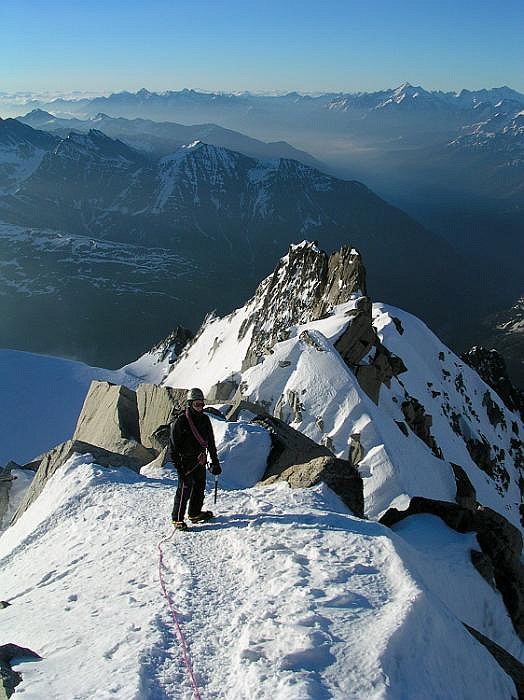
The original title of this book was “Alpinisme Plaisir dans le massif du Mont Blanc”. But the carefree, hedonistic, utilitarian implication of the term “plaisir” is not really applicable to most of the Mt. Blanc range. Luckily, the UK/US edition of this book takes the wise step to eschew most of this approach, with a far more appropriate title and clarifying (in an initial note specific to the English language edition) that these may be entry-level routes, but are not trivial or easy-going at all.
The basic setup of the original book remains however unchanged. If used by a beginner who plans to climb in this area with the help of a more experience partner, or hiring a mountain guide (and I suspect this was the target intended by Laroche and Lelong), then this is a terrific book. But there are a couple of debatable choices in the grading department that could make “The Mont Blanc Range” potentially confusing for a first-timer attempting (unwisely) to try on its own.
“The Mt Blanc Range” uses the double value European (actually French) scale, derived from analogous grading system used in English speaking countries, and popularized by Francois Damilano in his best selling guidebooks. Intended specifically for alpine climbing in altitude, this scale uses a first I to IV value for the overall seriousness of the route, while a second F to 7 value is used to define for the most technically difficult move of the route. As for this second value, the apparently weird mixing of two different scales (the traditional UIAA letters with the Scottish derived numbers) in fact makes some sense, as alpine routes until D are probably best described (in their technical value) using the older UIAA scale of the still widely circulating old guidebooks of the Mt. Blanc range (Vallot, AC, DAV or Buscaini), while the more difficult modern routes can be better defined using the modern numerical grades.
Problems arise however with the first number, the one defining seriousness. Grading a route, especially when you've to deal with the very volatile and changing conditions of the alpine environment, it's always a matter of comparison - something is not “overall” difficult or serious per se, but is difficult or serious in comparison with something else (because you have to define first what “serious” and “difficult” means). So many grades here are probably reasonable if you take the routes out of context, but make little sense if you start to compare one route to the other. For instance, the Tour Ronde, if climbed all the way from Col d'Entréves, gets graded II/AD, the same class given to the good 'ole Cosmiques Ridge. Which of course doesn't make much sense, as the Cosmiques has semi-equipped sections (the F4c slab has now drilled holds), it's shorter, and ends up at the telepherique station; while the Tour Ronde descent is one of the regular accident scenes of the range (and the ascent is complex, longer than it seems and not trivial at all).
Another example: the popular Midi-Plan traverse gets II/AD+, which is exactly the same grade assigned to the Normal Route of the Droites. The Midi-Plan shouldn't be underestimated, but it's nowhere near as serious as the Droites's line: a strenuous, long (1400m) course that, in the wrong snow conditions, may become a trap, with a tricky approach and an awkward descent that includes four/five non-bolted abseils, that need often backup-ed (the English-language edition rightly suggest, if the “official” descent looks too dangerous, to reverse the ascent route). While we're here: why in the world the Aiguille d'Argentière normal route from the Milieu Glacier gets graded III if the Droites are just II?
The most baffling illustration of this comes, however, with the normal routes of the Big One itself, Mont. Blanc, 4807m. The Three Monts route (Tacul – Maudit – Blanc) from Col du Midi gets a III/PD+ to AD (depending on conditions); the Gouter is graded III/PD; the Grand Mulets (via the north ridge of the Dome, now a safer alternative to the traditional Grand Plateau line) is III/PD+; while the Aiguilles Grises / Italian Normal Route (still called here “the Pope Route”, oh dear) is graded III/PD. A novice may thus come to the conclusion that all four alternatives are more or less similarly serious and/or difficult, with the 3MB edging a bit the whole lot, and the Gouter and the Italian Route competing for the “easiest” prize.
I can't comment on the Grand Mulets line (as I've not climbed it), but the rest is way off the mark. The Italian Normal is in a different class of difficulty than the other two - it's longer, more complex, more strenuous, little frequented, with a 6 hours access to the hut that starts at 1700m, and a 1800m summit day going over something like 8 km of extension. The Midi/3MB route has a couple of 45° sections (and keeps you on or above 4000m for most of the time), but starts right at 3600m and the hut is reached via the Aig. Du Midi telepherique. The Gouter Hut access is long and can be very dangerous in some condition, but the summit day is much shorter (“just” 1000m) and the route relatively straightforward, and often amazingly busy. It's my personal opinion that the Italian Normal is a far more interesting way to climb Mt. Blanc than the other two, but we're not speaking about aesthetics here – the French Normal routes are simply more approachable and a better choice for someone who has some serious previous experience (or is not being guided).
These remarks shouldn't be misunderstood. All these routes could be deadly in wrong conditions (weather is the great killer on Mt. Blanc), or if attempted without the right level of preparation. Also, it should be acknowledged that the authors have taken a great deal of space, not just praising the quality of these lines, but also rightly emphasising their dangers. A lengthy introduction to the Mt. Blanc Normal Routes pulls no punches insisting on the right level of attention here, and generally speaking this book makes a valiant effort to recommend prudence and attention. But the authors couldn't simply ignore that nowadays, thanks to the heavy grade-related hype promoted mainly by climbing magazines, people (particularly novices) use grade as an all important guidelines.

Pros: Wide choice of routes, excellent and comprehensive presentation, nice routes sketches, pleasant and readable graphic presentation, great value for money.
Cons: Routes list restricted to the French sector of the range, thus missing some opportunity elsewhere; grades may be misleading if interpreted by someone not already acquainted to the area.
Overall: a useful tool for people who wants to approach Alps most renowned mountaineering area or for more experienced mountaineers in search of a classic line to climb, but should be used with care.
Mont Blanc Range - Classic Snow, Ice and Mixed Climbs

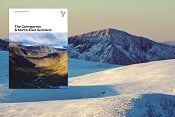
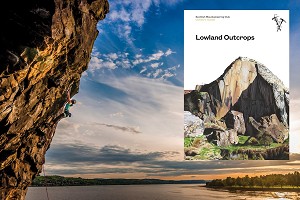
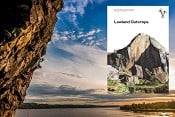


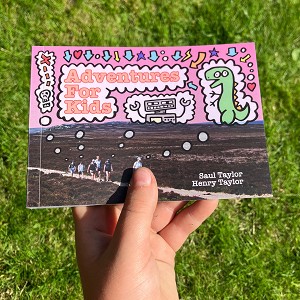
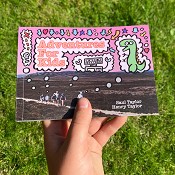
Comments